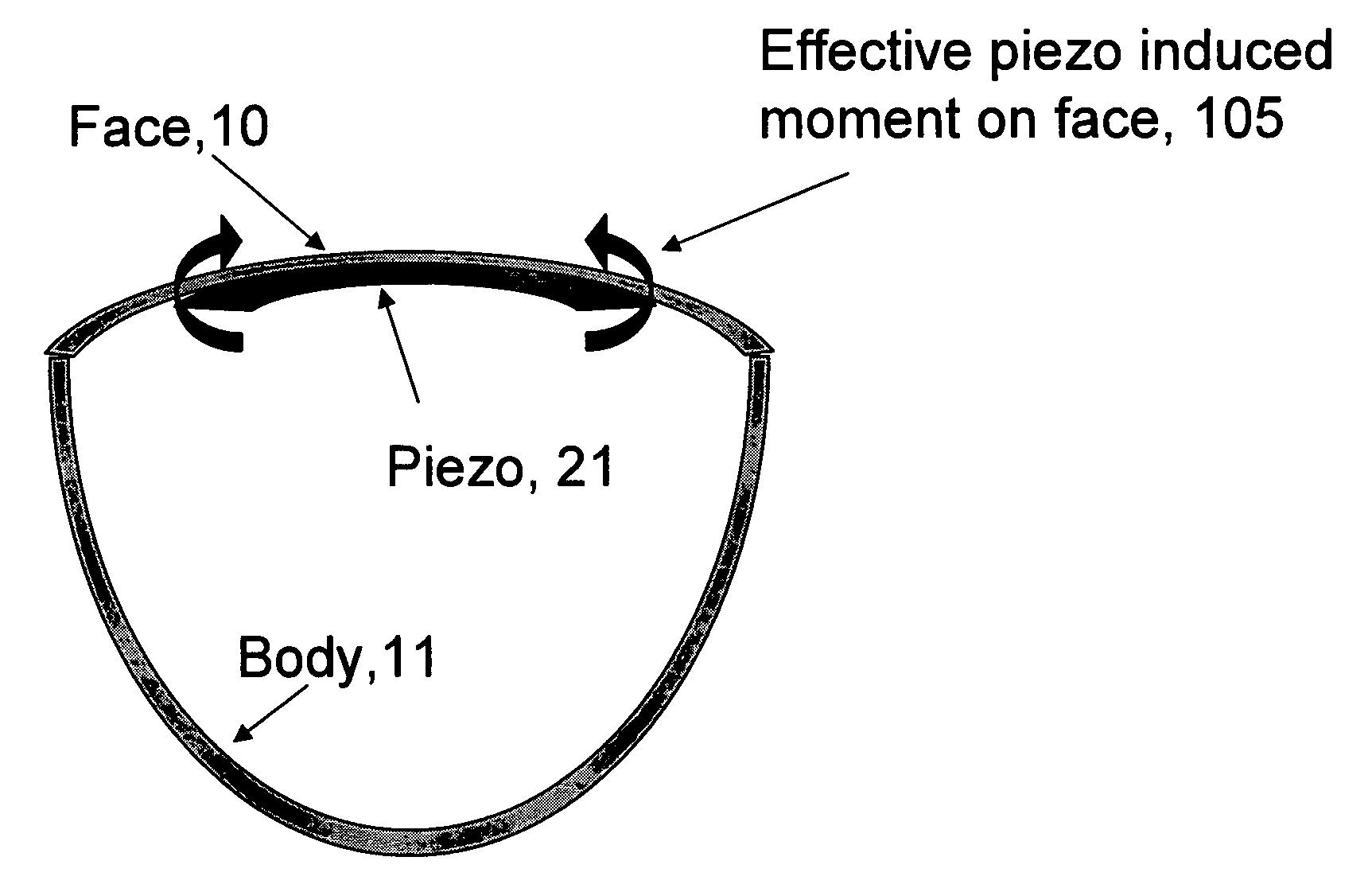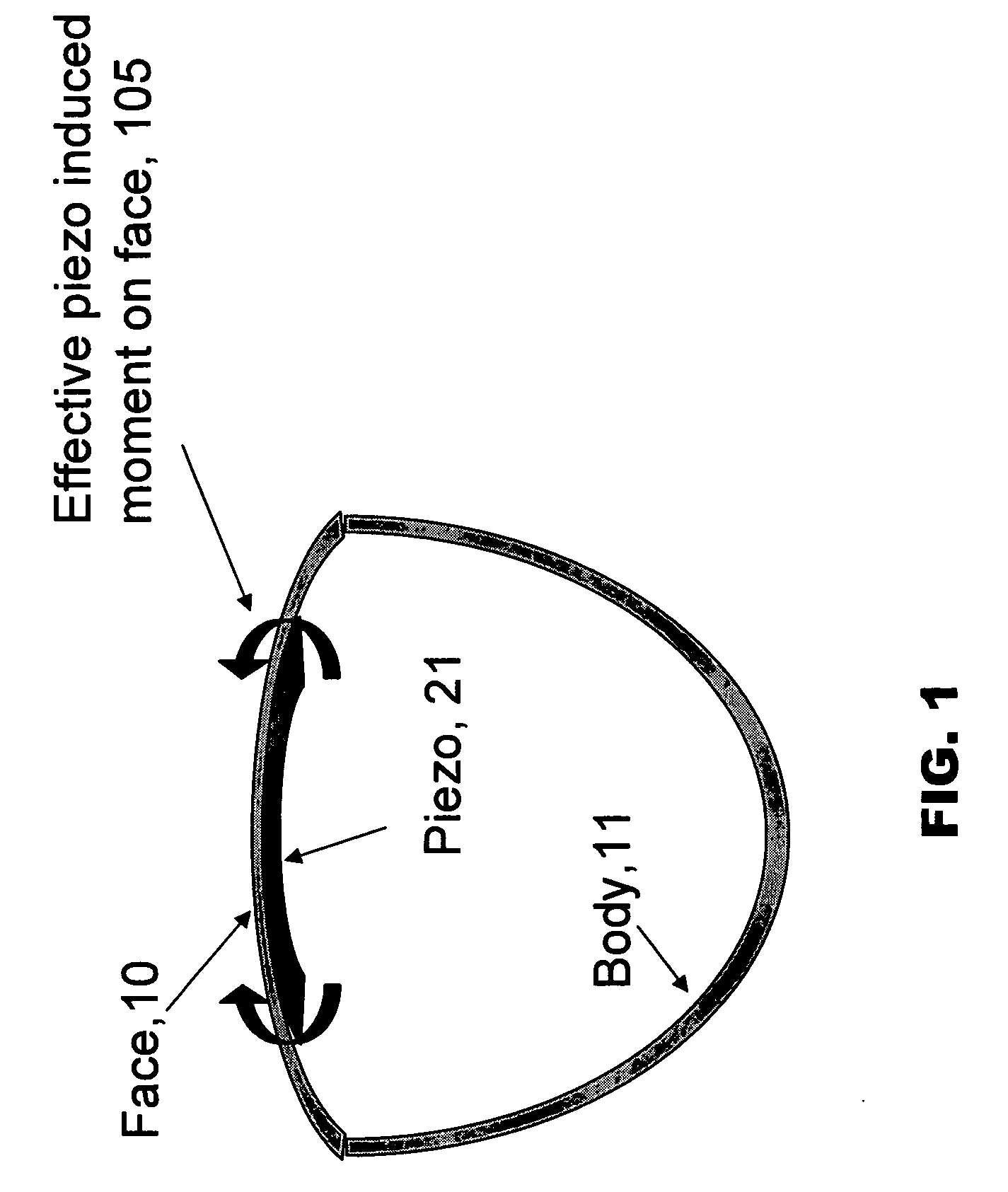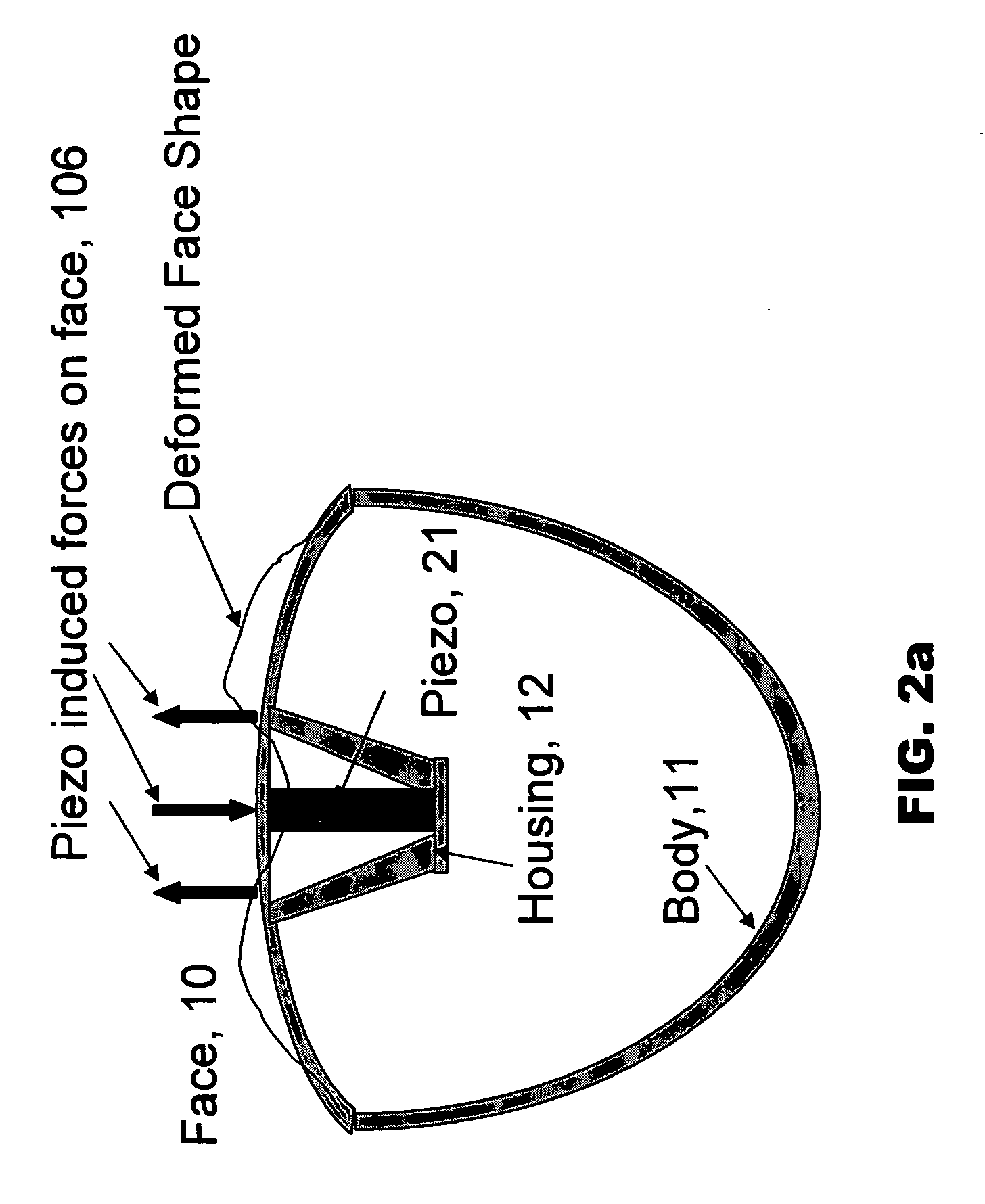Method and apparatus for active control of golf club impact
a golf club and active control technology, applied in the field of advanced sporting equipment design, can solve the problems of high forces both, and achieve the effects of reducing the impact friction coefficient, and high amplitude face oscillation
- Summary
- Abstract
- Description
- Claims
- Application Information
AI Technical Summary
Benefits of technology
Problems solved by technology
Method used
Image
Examples
third embodiment
A third embodiment is shown in FIG. 4. In this embodiment the piezo 21 acts between the face 10 center and a stiff backing / support structure 207 . The support structure must be stiff for high reaction force—on order of 1-10× the stiffness of the face so that actuation induces deformation of the face instead of the backing structure. There is a potential to use an intermittent contact between the piezo and the face. Because of the requirements of high stiffness, the backing structure tends to be heavy as well.
In Concept 3 shown in FIG. 4, there is a piezo element 21 configured between the face 10 and backing structure 207 which then passes the face interface load to another piece of the club head, i.e. the rear, the body 11, or the perimeter around the face. When the face moves in about a millimeter during impact of the ball and therefore compresses the piezo, it generates a charge and electrical energy that can be used to power the system and for example excite an ultrasonic device...
PUM
 Login to View More
Login to View More Abstract
Description
Claims
Application Information
 Login to View More
Login to View More - R&D
- Intellectual Property
- Life Sciences
- Materials
- Tech Scout
- Unparalleled Data Quality
- Higher Quality Content
- 60% Fewer Hallucinations
Browse by: Latest US Patents, China's latest patents, Technical Efficacy Thesaurus, Application Domain, Technology Topic, Popular Technical Reports.
© 2025 PatSnap. All rights reserved.Legal|Privacy policy|Modern Slavery Act Transparency Statement|Sitemap|About US| Contact US: help@patsnap.com



